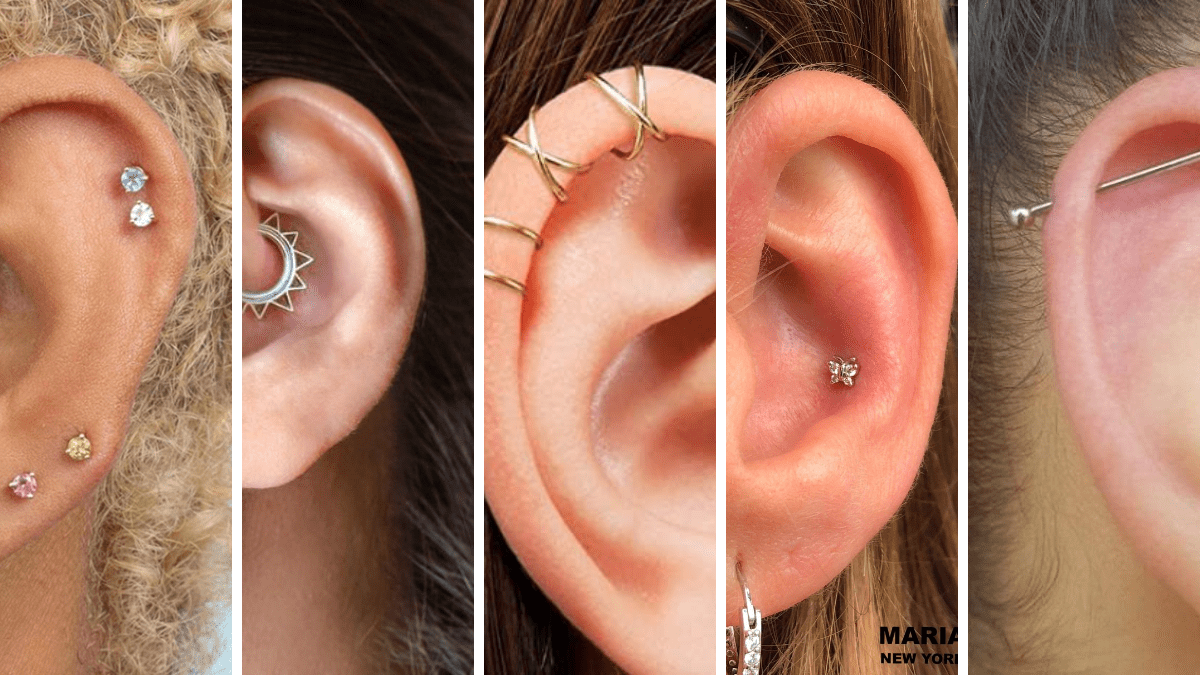Ear piercings have become extremely popular. The accessory du jour is now a carefully and tastefully curated ear. While the types and combinations of ear piercings you pick are entirely up to you, we’re here to guide you through the process. Continue reading to learn more about the newest earring styles, from the helix to the tragus, and to see some of our favorite pieces to get ideas for your next cool-girl piercing.
- The Helix Ear Piercing

Helix piercings can done anyplace on the ear’s upper outer cartilage. When going from the lobe, these are frequently the initial options. This classic flat piercing is now even more iconic, with piercers and customers experimenting with several helix piercings on the same ear.
- Daith Piercing

The daith, which is found in an inconvenient location is the hoop that hugs the cartilage inside the ear. It requires piercing by a competent piercer. It is also said to aid in the relief of migraines.
The daith piercing takes approximately six to nine months to heal on average. It is not recommended to sleep on a fresh piercing until it has fully healed. However compared to some outer-ear piercings, sleeping on a daith piercing within a couple of months is very typical.
- Tragus Piercing

The tragus, a little flap that partially covers the ear canal, can give interest to any ear, especially if it’s an ornament with a lovely stud or a fitted hoop. Since tragus is a cartilage piercing, you should expect pain to be between a four and a five on a scale of one to ten.
- Industrial Piercing

A straight barbell connects one cartilage piercing to another on the top ear to form an industrial piercing. They are more difficult to heal because there are two cartilage piercings instead of one,. They have a tendency to become irritated. Make sure your hair and glasses aren’t sitting on this. It’s never a good idea to sleep on it.
- Conch Piercing

The conch receives its name from its similarity to the same named spiral shell. Conch Piercing is a position in the middle of your ear cartilage. It can get pierced with a single stud, a double stud, or even a cuff that wraps around the edge of your ear for a delicate look.
Before you make an appointment for a new ear accessory, do some research on how to properly care for your piercing. Aftercare is what keeps your piercing from becoming infected. Twist, spin, rotate, or sleep on any of your piercings to reduce the chance of infection. Avoid sleeping on them and rinse them once or twice a day with saline.



